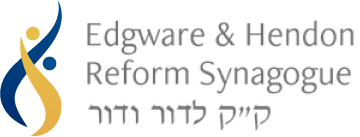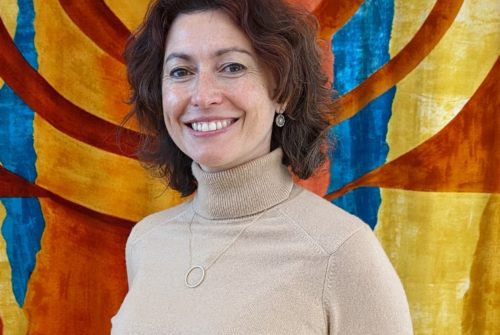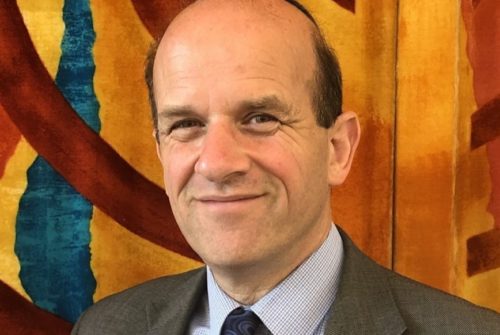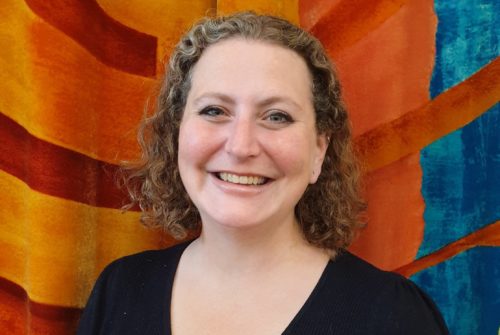I am neither Ashkenazi nor Sephardi, I am Jew from both origins, from Spain and Portugal and also Poland and Germany.
The first recorded mixed marriage in my family between the two Jewish communities was between Raphael Costa and Rachel Zundel in 1814. At that point that branch of my family kept its Sephardi identity and presumably Sephardi Jewish way of life because when in 1889 Sarah Costa married Woolf Goldsmith at the Great Synagogue in Dukes Place London, Sarah was known as being Portuguese in our family. It has meant that I have always been very interested in both ways of being Jewish, I felt as weirdly at home in Faro, one of the centres of Jewish community in the Algarve as when I visited Warsaw. Yet there was certainly a sense in my family that we are Ashkenazi Jews, as if this was us and Sephardi Jews were the ‘other’.
In 1985 I remember walking through Ashkelon in Israel. I was there to visit a friend who was volunteering in an absorption centre for the Ethiopian Jews who had just a few months before been brought to Israel in Operation Moses. I lost my way and could not find the centre. I asked some local boys to help direct me. I was shocked by the racism that they expressed against the newly arrived Ethiopian Jews. I was aware that in a previous generation their parents had probably received the same as newly arrive Mizrachi Jews in the Ma’abarot, temporary camps for Jews from Morocco, Libya and Algeria. I put it down to David Ben Gurion’s famous saying that: “When Israel has prostitutes and thieves as well as police officers, we’ll be a state just like any other.” I should not expect racism to be absent in Israel – still as a Jew and knowing the mix of people that makes Israel, it upset me.
Our Rabbis were upset by what Miriam did in our Torah portion. On face value Miriam is just as racist as those boys who swore about the Ethiopian Jews newly in their midst. She, in the words of our portion, speaks against Moses on account of the Cushite woman whom Moses had married. And it is not just her, Aaron joins in the abuse too.
Where the place called Cush is somewhat uncertain – is this the Midianite desert dwelling woman Tzipporah whom Moses originally married or is this another woman from Ethiopia, the translation of Cush that the Septuagint, the Greek Jewish bible of the 2nd Century BCE uses? Either way it is the place of origin only that Miriam and Aaron are being mean about. On face value this is straight racism in our Torah and God is definitely angry about it, punishing Miriam for her offence.
The trend though in Rabbinic writings from the beginning of the common era, as Rabbi Uri Regev says (D’var Torah 27/5/21), was instead of joining God in condemning the racism, our Rabbis pretended it never happened, to cover it up. This is summarised in Rashi’s eleventh century commentary: what Miriam was saying was that being black she was beautiful, based on a numerical equivalence between Cushit and a word for beauty, or that this was just a nickname to avoid the evil eye, or that her critique was that Moses had been avoiding being together with his wife due to his dedication to his role as a prophet and leader. It is as if the Jewish community could never be discriminatory against our own because we experience the effects of racism ourselves.
But we can and we do. Often at a low level and perhaps inadvertently but it is real problem for our Jewish community. A few weeks ago the Board of Deputies of British Jews published its landmark report from the recently established Commission on Racial Inclusivity in the Jewish Community. Its author was Stephen Bush, Jewish political editor of the New Statesman, who is himself black. It is a hugely thorough report, based on evidence from many people and organisations in our community. It’s compilation was spurred by the testimony of Black, Mizrachi and Sephardi Jews that had begun to be properly heard after the Black Lives Matter movement following the murder of George Floyd in Minneapolis, brought out stories in the Jewish community of marginalisation and discrimination. We heard testimony about this here in our own EHRS community which challenges us to act and make sure that we are become a community where, in the words of the report, racial diversity is never a reason for exclusion or even the perception of a lesser welcome.
The report has many recommendations based on the evidence heard. To begin with the idea that there is such a thing as ‘looking Jewish’ is damaging and excluding. We Jews are a people made from many peoples around the world of many different origins.
There has been a tendency for some Jewish security operations, which seek to protect our community, to racially profile people before extending a welcome to our facilities. This must stop, and we heard here at EHRS how hurtful that racial profiling had been so some of our own members.
We need to find ways to teach the diversity of the Jewish story. The report coins a new term: Ashkennormatvity – the assumption in the UK that Jews are Ashkenazi. It means that we tend to teach the history of the Jews of northern and Eastern Europe as if that is all of us. We tend to perpetuate the customs of Ashkenazi Jewry without ascribing equal value, especially in a Reform community like ours which is mixed to those of Sephardi and Mizrachi Judaism. We tend to study the writings of Ashkenazi Jews much more than those of other origins. We commemorate of course the tragedies of Ashkenazi Jews whilst not recognising the complementary pain of Mizrachi Jews who had to leave their own counties of origin.
This Synagogue can be proud of its diversity but there is still a way to go. On Sunday June 27th at the AGM of Reform Judaism I am going to be in conversation with Stephen Bush about how we and other Reform Synagogues can put the results of the report into action – so that there are no more careless comments by a Miriam of our day, or other worse effects.
Tomorrow here at EHRS, on Zoom for adults and in person for children, we are going to be making a difference at our ‘We’ve Travelled So-Far-Day event’ This is morning dedicated to telling the story of three Sephardi and Mizrachi communities. In the Caribbean, in Safed in Israel, and in Baghdad. Eighty years ago this week, a violent anti-Semitic riot, known now as the Farhud, killed hundreds and injured thousands of Jews in Baghdad spurring the exodus from Iraq that has all but put to an end 2500 years of Jewish culture in that country. Just as we remember the Shoah we have a duty to remember the Farhud. And we have a duty to teach the glory of our history in these places and so many more where in Ashkenormative Jewish ways one might wrongly say – ‘funny you don’t look Jewish’. We are privileged that Edwin Shuker, Vice President of the Board of Deputies who was one of the instigators of the Bush Report will be one of our teachers, recalling his own connection with Baghdad.
Jews of many different origins have created our people ever since it began. A mixed multitude accompanied and mixed into the tribes of Jacob when they left Egypt. It is one of the ingredients for the survival of the Jewish people. May our Synagogue and our community’s fulsome welcome help to lead the way to ensuring that we welcome, include, celebrate and commemorate Jews of all origins in our day.



